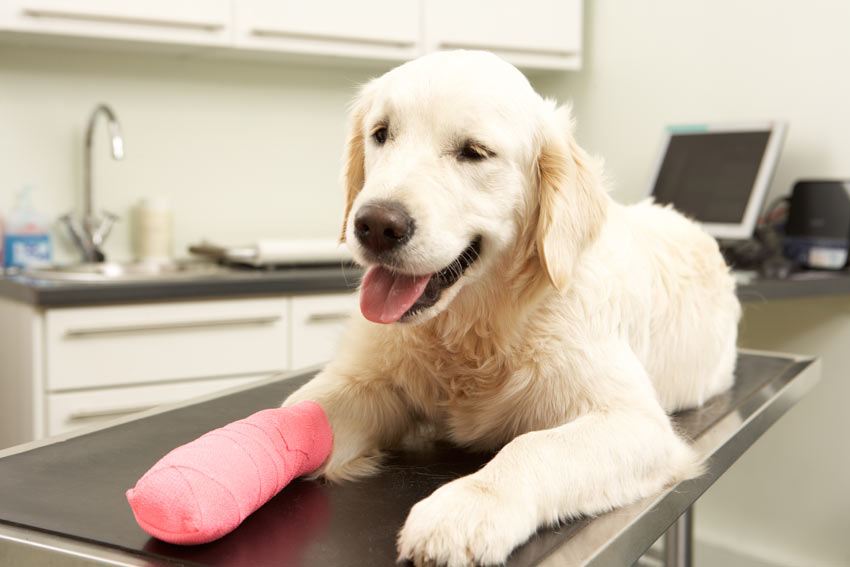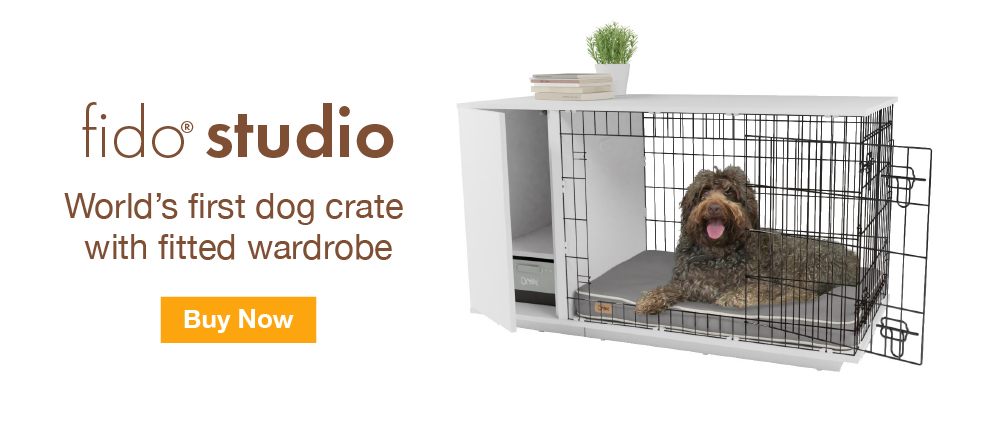If your dog has been to the vet’s for neutering, or any other operation, a recuperation period is required.
Making your dog feel comfortable is a great way to encourage him to get better. That, and lots of love, are the key things. But there are a few precautions and safety measures too, to ensure your dog doesn't cause himself pain or injury.

This German Shepherd puppy has a clean and comfortable blanket to recuperate on
A Clean And Comfortable Bed
Before you leave to collect your dog after an operation, make sure you have a clean and comfortable bed or blanket laid out for him to lie on. It might also be a good idea to lay down a waterproof mat or sheet of plastic, because it is very common for dogs to pass urine in their sleep after being under general anaesthetic.
Make Sure You Have All Your Dog’s Medical Information
Make sure you have all of the information you need before leaving the vet’s. If you are ever unsure about anything, just ask the vet or receptionist. It is important that you make a note of the names of each medication, that you know when you should start giving them, and how often you should administer them. Your vet should also tell you how much food and water should be given, as well as how much and how often your dog should be allowed to exercise.

This Dachshund is taking time off after an operation
Dog Stitches (Sutures)
If your dog has been given stitches then your vet will organise an appointment for them to be removed. They might also provide your dog with a cone (or Elizabethan) collar, which will prevent him from pulling out the stitches with his teeth. If you notice that any stitches have been removed or that any other problems develop, contact your vet at once.
A small t-shirt, a pair of tights or even a snood can also help prevent the dog from scratching at the stitches. Alternatively, shift his attention by placing a bandage on his foot, as he will now want to worry that instead. If you notice that any of your dog’s stitches have been removed, contact your vet as soon as you can. Open wounds will need to be stitched back up to avoid infection.

A Shar Pei wearing an Elizabethan collar after having stitches
The Journey Home
When collecting your dog from the vet it is always best to bring somebody with you, especially after an operation. Until he regains full consciousness his balance won’t be great and he might be a little unsteady on his feet. You may need to lift him into the car as you leave. If you are unsure about how to lift your dog into the car, follow this link to our section on how to pick up a dog.

A dog crate is the safest method of traveling with your dog
A dog crate for your car is a great idea as it provides him with a place to quietly lie down without the constant worry that he is going to fall off the seat. Chose an appropriate size from our range of Fido Classic dog crates.
Keep the car well ventilated and at a comfortable temperature. If your dog falls asleep then it is best to allow him to recover in the car when you get home, but never leave him alone. When he wakes up you may need to help him get out of the car again.
Postoperative Dog Care - Looking After Your Dog At Home
After being under anaesthetic your dog will not have a lot of strength or coordination and will need to rest in a quiet and calm environment. Keep a close eye on him until he is able to walk around the house on his own. If your dog is still unable to support himself after 48 hours you should get in contact with your vet.
The first thing your dog will want to do when he gets home (apart from sleep) is go to the toilet. Assist him outside to his usual spot. You may need to support him while he relieves himself.

A West Highland Terrier sporting the latest fashion in Elizabethan Collars - which is also helping her leave those stitches alone
Postoperative Dog Cough
Do not be alarmed if your dog develops a cough after surgery. The tube that delivers the anaesthetic during the operation may cause slight irritation to his throat. This may also make eating quite difficult. A postoperative dog cough is very common in all breeds, but it usually only lasts for a short time. If it persists for longer than a few days, get in touch with your vet.
How Much Water Should Your Dog Drink After An Operation?
Your dog may become quite dehydrated after surgery. When he arrives home he could be very thirsty, but it’s important that you control how much and how often he drinks. After some operations dogs can go back to their normal eating and drinking habits right away, but other operations require him to fast and not drink much water. Ask your vet before you take your dog home how much water he should be drinking.

It takes time to recover from having a cast put on your leg
Keep Your Dog’s Dressings Clean and Dry
Just like humans, dogs need their medical dressings to be kept clean and dry to prevent infection. If you are worried about your dog getting infections when he goes outside there are a few tricks you can try. For example, if your dog has a dressing on his leg, lift his foot into a plastic bag and secure it higher up the leg with a loose elastic band to create a barrier between the dressing and outside world. Remember to remove the bag and elastic band as soon as the dog comes back inside and keep them out of reach so that he cannot choke on them.





Comments
There are no comments just yet